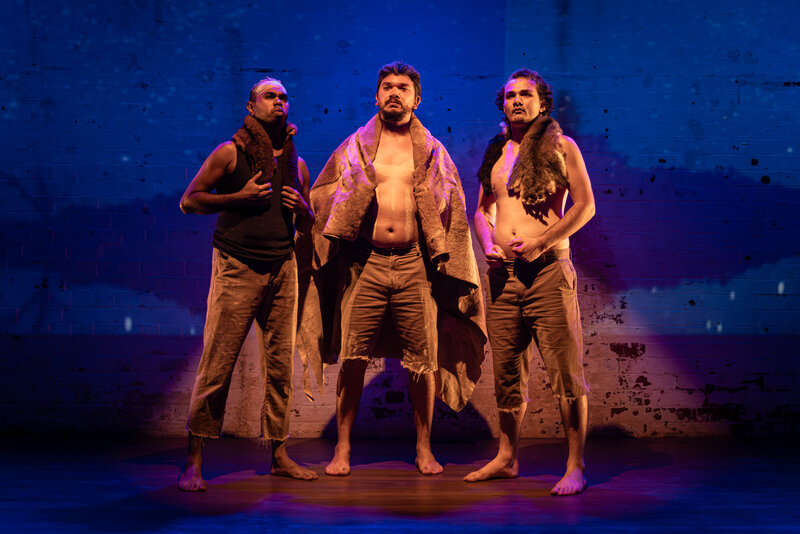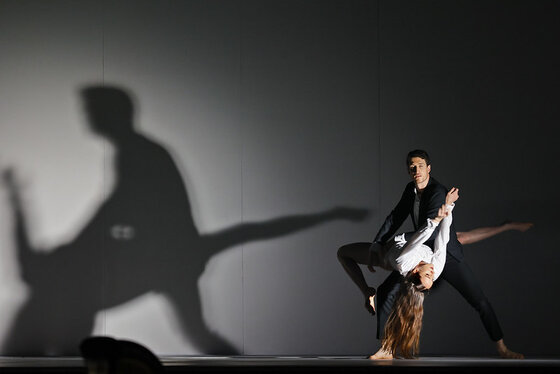It’s been a while since we’ve heard from Tom Ford. I guess the successful fashion designer and entrepreneur (turned screenwriter, producer and director) has had other things on his mind since A Single Man (2009); but now he’s back with his sophomore feature film Nocturnal Animals – and it’s quite a film.
Based on the novel Tony and Susan by Austin Wright, Nocturnal Animals uses a film-within-a-film structure to great effect as Ford deftly explores the breakdown of a marriage – and possibly a life. The film makes several changes to the book, including relocating parts of it from New England to the barren plains of western Texas; and adding an additional twist to the main character’s story to provide another layer to the emotional drama.
 That main character is Susan Morrow (Amy Adams), a Los Angeles art gallery owner who lives a stylish existence with her husband Hutton (Armie Hammer). It doesn’t take long however to figure out that things are hardly ideal between Susan and Hutton. On the day Hutton is supposed to fly out to New York for a “business meeting”, Susan receives a package. It’s from her former husband Edward Sheffield (Jake Gyllenhaal). He’s an academic at a Texas university, but is (it seems, after some struggle) having a novel published. The package is a proof copy of the novel, and his accompanying note says he wants Susan to read it. With Hutton out of town, Susan settles in to read the novel, titled Nocturnal Animals. In it, the protagonist, Tony Hastings (also played by Jake Gyllenhaal) sets out with his wife Laura (Isla Fisher) and daughter India (Ellie Bamber) to drive from LA to Dallas. In the west Texas badlands, they encounter a trio of thugs led by Ray Marcus (Aaron Taylor-Johnson) who force them off the road. In the ensuing confrontation, they steal Tony’s car and abduct Laura and India. They take Tony in their car and dump him in the desert. When Tony manages to raise the alarm, Texas lawman Bobby Andes (Michael Shannon) is put on the case. But their efforts to find the missing women will end in tragedy.
That main character is Susan Morrow (Amy Adams), a Los Angeles art gallery owner who lives a stylish existence with her husband Hutton (Armie Hammer). It doesn’t take long however to figure out that things are hardly ideal between Susan and Hutton. On the day Hutton is supposed to fly out to New York for a “business meeting”, Susan receives a package. It’s from her former husband Edward Sheffield (Jake Gyllenhaal). He’s an academic at a Texas university, but is (it seems, after some struggle) having a novel published. The package is a proof copy of the novel, and his accompanying note says he wants Susan to read it. With Hutton out of town, Susan settles in to read the novel, titled Nocturnal Animals. In it, the protagonist, Tony Hastings (also played by Jake Gyllenhaal) sets out with his wife Laura (Isla Fisher) and daughter India (Ellie Bamber) to drive from LA to Dallas. In the west Texas badlands, they encounter a trio of thugs led by Ray Marcus (Aaron Taylor-Johnson) who force them off the road. In the ensuing confrontation, they steal Tony’s car and abduct Laura and India. They take Tony in their car and dump him in the desert. When Tony manages to raise the alarm, Texas lawman Bobby Andes (Michael Shannon) is put on the case. But their efforts to find the missing women will end in tragedy.
The contrast between Susan’s sleek, sophisticated lifestyle in LA and the gritty events happening in the Texas of the novel provides clear demarcation between the two segments of the film. That demarcation is more than just the line between the “Susan” and “Tony” parts of the story. The point is that cruelty and violence don’t just happen “out there” beyond – or even on the fringes of – civilised society; they can also happen where we feel most safe.
Ford also wrote the screenplay, which is an object lesson in understatement. A fine example is the way in which he conveys something significant about Susan and Hutton’s finances in two masterfully composed shots. That understatement infuses the entire film. Little is explicitly spelled out, leaving it up to the audience to draw inferences from clues planted throughout the film. He also crafts some excellent transitions between scenes (and I love a great transition), with one in particular involving a crackling fireplace standing out.
It would be remiss if I didn’t also mention the wonderful score from Abel Korzeniowski. A student of the great Krzysztof Penderecki, Korzeniowski’s score is reminiscent (undoubtedly deliberately so) of Bernard Hermann’s collaborations with Alfred Hitchcock. The shimmering orchestral arrangements not only underscore the on-screen action, but provide clues as to the characters’ motivations.
Despite a large cast list, the film relies heavily on the performances of Jake Gyllenhaal and Amy Adams. Gyllenhaal appears in both sections of the film – as the “fictional” Tony from the book, and as the “real” Edward. Note however the clever device that he never interacts with Amy Adams in the “present” of the “Susan”section of the film, only in the past. So both the Tony and the Edward characters are both actually products of Susan’s mind; Tony from her imagination and Edward from her memory (indeed, perhaps both). As the common thread in the film, Gyllenhaal delivers, giving what’s probably his strongest performance since his much-acclaimed turn in Nightcrawler. While Gyllenhaal’s role is one of demonstrable physicality, Adams has to contend with a part of more restrained demands. After all, she has to spend a good chunk of the film reading a book. But she has to convey the inner turmoil of the character with limited dialogue; and manages to pull it off remarkably. She does get to show a greater range in the flashback segments. Aaron Taylor-Johnson (Avengers: Age of Ultron) gives a menacing performance as the odious Ray; while Michael Shannon (99 Homes) is suitably world-weary in the role of Andes (and he also happens to get the benefit of the limited humour in the film).
Although Tom Ford might not make a lot of films, he makes a statement when he does. Nocturnal Animals is definitely a case in point. Dark, fascinating and occasionally unnerving, this is a quality film for those who seek something outside the mainstream.
Director: Tom Ford
Cast: Amy Adams, Isla Fisher, Jake Gyllenhaal, Aaron Taylor-Johnson
Release Date: 10th, November 2016
Rating: MA 15+
David Edwards

David Edwards is the former editor of The Blurb and a contributor on film and television




